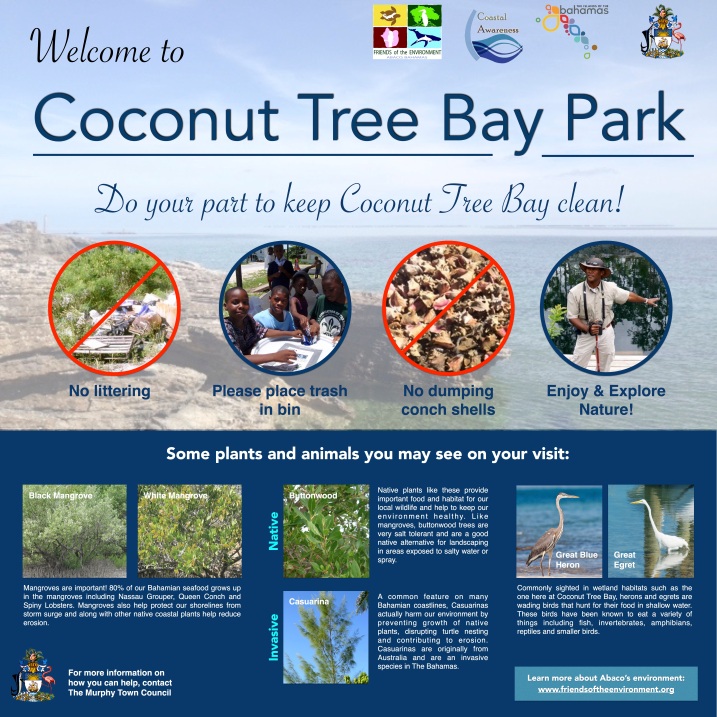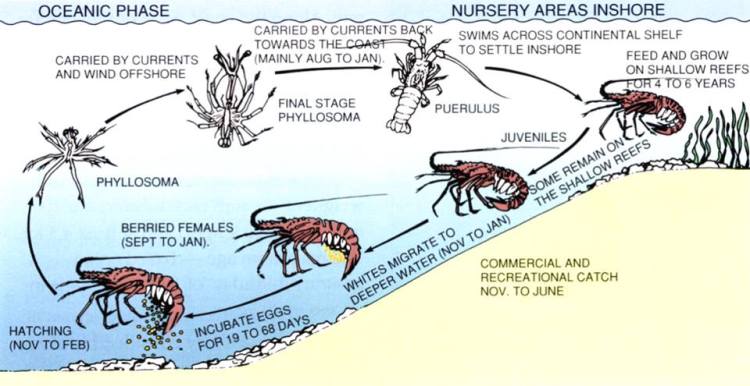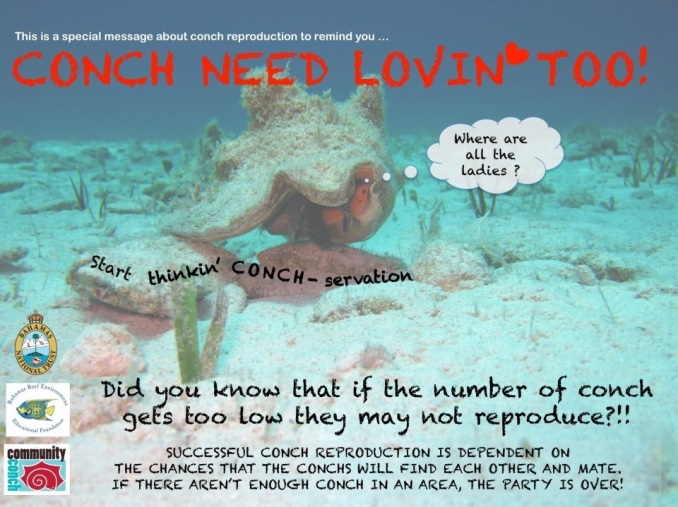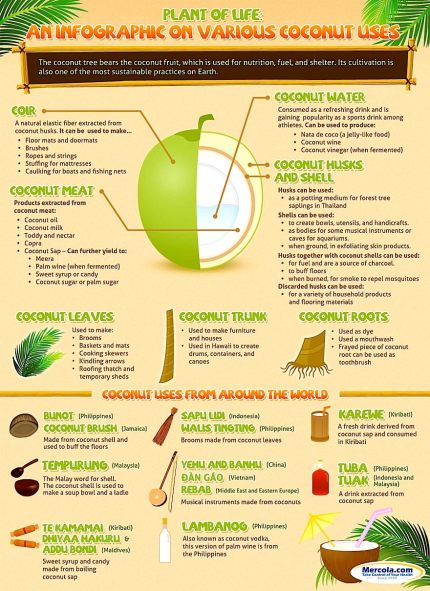COCONUT TREE BAY PARK, MURPHY TOWN ABACO
CONSERVATION POSTER
ENGLAND INTRODUCES A PLASTIC BAG CHARGE – AT LAST!
Plastic bags have featured in several of my past posts that have a conservation theme. They take decades to disintegrate in seawater; meanwhile, quite a number of species are apt to mistake them for jellyfish with horrible results (usually fatally blocking the digestive or excretory systems).
In the UK, Scotland, Wales and Northern Ireland introduced a compulsory 5 pence levy on all ‘first-use’ plastic bags some time ago. In England, there seems to have been an extraordinary dilatoriness in bringing in the charge. It’s not a vote winner, and the more vocal members of the population seem to feel it unfair or perhaps even a breach of their Human Right to Bear Plastic to be expected to take their own bags – or pre-used and exempt plastic bags – with them when they shop. Pah! Anyway, they’ve lucked out now. After which rant, I like this Newman cartoon on the topic:

NOAA MARINE DEBRIS 2015 Art Contest Winners
Congratulations to our 2015 Keep the Sea Free of Debris art contest winners! This year, we received more than 600 entries from kindergarten to 8th-grade students with incredible visual messages on being the solution to ocean pollution. Winners of the 2015 art contest will be featured in our 2016 marine debris calendar to help raise awareness on the harmful impacts marine debris has on our oceans year-round. Marine debris makes everyone “crabby” including 6th-grader Halie C., from South Carolina. Have a look at our 2015 Keep the Sea Free of Debris art contest winners…














GETTING THE KIDS INVOLVED!
HOW PLASTIC AFFECTS TO WORLD (Nat. Geo. video infographic)
GRIST GUIDE TO MARINE PROTECTED AREAS
CLICK LINK HERE FOR MORE
TOP 5 PIECES OF TRASH THAT KILL MARINE ANIMALS
By Jennifer Waugh, The Morning Show anchor, investigative reporter – News4Jax.com

Marine animals eat plastic bags mistaking them for jellyfish and squid.
JACKSONVILLE, Fla.
Ninety centimeters of polyflat braided rope and several plastic bags — that’s what marine biologists found in the stomach and throat of a Cuvier’s beaked whale that beached itself Tuesday in St. Johns County. The 13-foot-long mammal died. Marine biologists at Marineland performed a necropsy and discovered rope in its throat leading to its stomach.
“It’s the common rope we use on boats and ships. This (rope) floating in the water looks like a fish of some kind and it tried to eat it. The animal basically starves to death because it can’t eat anymore,” said Dr. Quinton White, a marine biologist at Jacksonville University who talked in general about the danger rope poses to marine animals.
.
White said marine animals are known for their excellent sense of smell and touch, but not for their sight. They can’t always tell the difference between a jellyfish or squid, which is a common food for many marine species, and a plastic bag. “A lot of animals dolphins, sea turtles, whales, fish, we’re finding them with plastic in their guts,” he said. White showed Friday on “The Morning Show” the top five pieces of trash that are the most common risks to marine animals:
Plastic bags: Like the ones you get at the grocery store and the bags used to store sandwiches and chips.
Styrofoam cups: Styrofoam is not biodegradable. It breaks down into small pieces that get eaten and then can get trapped in a fish’s gills.

Monofilament line: Also known as fishing line, is a major problem with entanglement.
Marine rope: Like what’s used by fishermen and boaters, can be confused with food.
Frisbees: The kind that has a large hole in the middle (pictured). White found a dolphin in the St. Johns River that had one around it’s head.
How to prevent your trash from winding up in the ocean:
“When you see pieces of trash, particularly plastic, pick it up if it’s on the ground because it will eventually end up in the ocean,” said White.
If you can, take your trash home with you if you go to the beach. Overflowing trash cans or a brisk wind can carry plastic bags out to sea even if they are in the garbage cans that line beach accesses.
Try to use reusable bags at the grocery store, instead of plastic.
If you spot a marine animal that has beached itself along our shoreline, there is an app you can use to report it. It’s called dolphin and whale 99.
CORAL REEFS – DESPAIR TO REPAIR? (IUCN VIDEO)
BIRDS, PLASTIC & CONSERVATION: A CONTROVERSIAL AD
For full context and commentary click HERE
CRAWFISH CLOSED SEASON NOTICES
FROM BREEF, AND A CHEEKY ONE USING A CERAMIC DISH BY RICHARD BRAMBLE

‘THE MAJESTIC PLASTIC BAG’
Outstanding ‘Mockumentary’, David Attenborough-style, of the life of a plastic bag and its danger-ridden migration from its urban origin to its home in the Great Pacific Garbage Patch. A genuinely funny – and genuinely thought-provoking – 4 minutes of conservation genius made for an online campaign and petition by HEAL THE BAY (props to Todd Pover for FB post of this)
NEW MARINE CONSERVATION BOOK 2014
(via Craig Layman at ABACO SCIENTIST)
A great new text book by Carleton and Jerry McCormick Ray. Carleton has made many contributions to conservation in The Bahamas, including in the early stages of establishing the Exuma Land and Sea Park. And I know he has been the most important career mentor for at least one Abaco Scientist. The Bahamas chapter is excellent. It would be a great read and discussion piece for many students, teachers, resource managers, or those looking for a broad introduction of conservation issues in the country (let me know if you are interested in the chapter, and I can look for ways to get it to you).
Providing a guide for marine conservation practice, Marine Conservation takes a whole-systems approach, covering major advances in marine ecosystem understanding. Its premise is that conservation must be informed by the natural histories of organisms together with the hierarchy of scale-related linkages and ecosystem processes. The authors introduce a broad range of overlapping issues and the conservation mechanisms that have been devised to achieve marine conservation goals. The book provides students and conservation practitioners with a framework for thoughtful, critical thinking in order to incite innovation in the 21st century.
“Marine Conservation presents a scholarly but eminently readable case for the necessity of a systems approach to conserving the oceans, combining superb introductions to the science, law and policy frameworks with carefully chosen case studies. This superb volume is a must for anyone interested in marine conservation, from students and practitioners to lay readers and policy-makers.”
Simon Levin, George M. Moffett Professor of Biology, Dept of Ecology & Evolutionary Biology, Princeton University
PIPING PLOVER PROJECT, ABACO

JANUARY 2014
A SELECTION FROM THE EXCELLENT SCUBAZOO



Credit: Neil Hammerschlag via http://theseamonster.net
NOAA Marine Debris Program
THE CORAL SONG – A CATCHY CONSERVATION MESSAGE
SHARK CONSERVATION CAMPAIGN
The Bahamas National Trust is promoting the conservation of Bahamas Sharks. A fine poster by Guy Harvey can be downloaded from the BNT website Shark Campaign page HERE
SEA TURTLE VIDEO
A cartoon about sea turtles that manages the difficult trick of being cute while being informative. Too much cute, and you get molasses-smothered info; too much info and your eyes may begin to glaze… I think this one gets the balance about right.
SMART NEW LOGO FOR THE ‘SIZE MATTERS’ CAMPAIGN
Now in its 3rd year, this successful campaign spearheads the drive to ensure that only proper-sized lobster / crawfish are taken. Starting out with a catchy video and song, the campaign quickly achieved widespread public recognition and support. The launch of a new logo will keep the campaign’s profile in the public’s mind… The magic measure is 5.5  Photo: The Abaco Scientist
Photo: The Abaco Scientist 
THE LIFE CYCLE OF A PLASTIC WATER BOTTLE
(food, or rather drink, for thought…)
THE LIFECYCLE OF THE LOBSTER
Two graphics from the excellent lobster / crawfish conservation campaign SIZE MATTERS 

BREEF Quick Guide to Bahamas Fishery Regulations
(Heads-up from The Abaco Scientist)
Click to enlarge
NOAA MARINE DEBRIS PROGRAM
Keepin’ the Sea Free of Debris!


ICC volunteers cleaned 10 million lbs of trash from our coasts
May 16, 2013 by NOAA Marine Debris Program| 2 Comments
By: Dianna Parker
One rubber chicken, 117 mattresses, 4,159 candles, and 689,274 utensils. What do all of these things have in common?
They’re all marine debris collected last September at the Ocean Conservancy’s 2012 International Coastal Cleanup®, sponsored in part by the NOAA Marine Debris Program.
The numbers are in: more than 550,000 volunteers came together to collect 10 million pounds of marine debris. In the United States, volunteers found enough bottles that, when stacked end to end, equal the height of 1,000 Empire State Buildings. That’s a lot of trash on our beaches and in our waterways!
This litter is threatening our marine environment, economy, and health, and the problem will only get worse unless we change the way we consume and dispose of products. There are solutions, and we can prevent litter from ending up in the ocean.
So here’s a challenge: the next time you use a throw-away item: a bag, bottle, or utensil, answer the question, “Where it’s going?” How will you keep your items from becoming litter in our oceans, rivers, and streams?
Head to Ocean Conservancy’s data release page for some neat infographics on last year’s trash haul. Here are the top 10 types volunteers found this year:

 THE PELAGIC OCEAN: AN INVESTIGATION INTO POLLUTION – BY KIDS
THE PELAGIC OCEAN: AN INVESTIGATION INTO POLLUTION – BY KIDS
BAHAMAS LIGHTHOUSE PRESERVATION SOCIETY
BLPS NEWSLETTER JAN 2013 FINAL
LIONFISH
The debate about the seemingly unstoppable spread of the invasive lionfish species is well known. There are some who argue strongly that lionfish have their uses, and not merely as a food source. To see ongoing lionfish research by the organisation REEF click HERE To supplement the static projection graphic for lionfish spread (below), here is an active graphic that vividly shows how the species (love them or hate them) has expanded exponentially in numbers and range over a very short period
PROPOSED MARINE PROTECTED AREAS FOR ABACO

LOBSTERS – WE GOTTEM! OVERFISH THEM – WE AIN’T!
Video courtesy the fabulous CONCH SALAD TV; heads-up from ABACO SCIENTIST; campaign by SIZE MATTERS
BAHAMAS LIGHTHOUSE PRESERVATION SOCIETY Read the Society’s 4-page January 2013 Newsletter HERE BLPS NEWSLETTER JAN 2013
The Society was founded in 1995, and it has already achieved much to preserve and protect the lighthouses of the Bahamas. Of particular interest to Abaconians will be the news about the Hope Town lighthouse, and about the work done at Hole-in-the-Wall. If you’d like to support this hard-working not-for-profit organisation and help to preserve a part of Abaco’s maritime history, the email address is blps.bah@gmail.com 
 A new environmental organisation has been announced: to find out more CLICK===>>> BPFA
A new environmental organisation has been announced: to find out more CLICK===>>> BPFA
 THE EFFECT OF RISING SEA LEVELS IN THE CARIBBEAN
THE EFFECT OF RISING SEA LEVELS IN THE CARIBBEAN
This map has been posted by the SCSCB, with the very interesting and definitely worrying text “The map shows projected impacts of a 2 meter sea level rise in the Caribbean. The orange is the impact of 2 meters, while the yellow is the 25 meter line. The last time the ice caps melted the sea rose between 18 and 25 meters. The most conservative estimates indicate a 1-meter rise by the end of the century (concurrent with a 2 degree C rise in temperature). From the position of planning, I am curious about the estimates being used by Caribbean resource managers in their long-range planning. For example, what percentage of Caribbean seabirds nest below 2 meters…”
EAST ABACO CREEKS NATIONAL PARK PROPOSAL
Click on the title above to see the BNT’s proposal for this major conservation proposal for the east Abaco creeks. It’s in .pdf form and you can (probably) copy / save it if you wish. The map below shows the 3 areas concerned. You can check out more details – and photos – on Facebook at EACNP
A VISUAL TO PONDER FROM ‘SCIENCE IS AWESOME’
CONSERVATION ON ABACO AND IN THE BAHAMAS
This new page (June 2012) is intended to showcase the achievements of the various organisations and individuals involved with the protection and conservation of the fragile ecology and wildlife in a small and rapidly developing area. A number of posts and articles from other pages will gradually migrate to this page.
I have posted on Facebook a statement by the new Environment Minister which praises the environmental work carried out in the Bahamas and pledges Government support MINISTER’S STATEMENT Let’s hope it’s forthcoming…
CONCH CONSERVATION
The supply of conchs is not infinite. Overfish them, take them before maturity or pollute their habitat and this valuable marine resource depletes – and conchs, as with so many marine species, will become threatened. Fortunately there is a Bahamas-wide conservation organisation with a website packed with interest. COMMUNITY CONCH is “a nonprofit organization that aims to protect queen conchs in the Bahamas, a species of mollusk threatened by aggressive over-fishing. We promote sustainable harvest of queen conch through research, education and community-based conservation”
“Helping to sustain a way of life in the Bahamas”
Much of the research has been carried out in Berry Is, Andros and Exuma Cays. However the team has recently been based at Sandy point, Abaco CLICK===>>> ABACO EXPEDITION The full Conch Conservation post can be found at CONCH QUEST
BAHAMAS MARINE MAMMAL RESEARCH ORGANISATION (BMMRO)
The BMMRO is featured many times in this blog, in particular in the pages WHALES & DOLPHINS and MANATEES. They now have a Facebook page with all the latest news, photos, newsletters links and cetacean / sirenian goss in one easily-digested timelined place. To reach it CLICK ===>>> BMMRO FACEBOOK PAGE
For the latest quarterly newsletter, just published, CLICK ===>>> BMMRO NEWSLETTER JULY 2012
A RECENT FLYER FOR THE ‘SIZE MATTERS’ CRAWFISH CAMPAIGN

BAHAMAS NATIONAL TRUST PRESS RELEASE JUNE 2012
ABACO PARROT POPULATION ON THE RISE
 The Bahamas National Trust in conjunction with Dr. Frank Riviera and Caroline Stahala recently conducted an intensive survey of the Bahama Parrot on Abaco Population surveys conducted in 2002 resulted in estimates of the Abaco parrot population of about 2,500 parrots with similar values in the following years. This year Dr. Frank Rivera and Caroline Stahala, who took part in the initial surveys, helped by BNT wardens and volunteers, conducted a 10 year follow up survey to determine the change in the Abaco parrot population since management began. The results indicate that the Abaco parrot population has increased since the BNT’s management efforts were implemented with a new estimate of just over 4,000 parrots on Abaco. The BNT has been concerned about the Bahama Parrot Population since the 1980’s. Studies indicated that the major threat to the parrots were feral cats who cause serious problems to the parrots during the nesting season by entering the underground nesting cavities and killing the breeding adults and chicks. The BNT implemented an intensive predator control effort in 2009 throughout the parrot nesting area culminating in the hiring of Marcus Davis as Deputy Park whose primary responsibility is to oversee the predator control program. During the breeding seasons the BNT has seen a decrease in the number of breeding parrots killed and nest success increase. The question, though, remained whether this effort would translate into an increase in the Abaco parrot population size. Survey results indicated that predator control has led to an increase in nest success. In addition, the Abaco parrots have weathered several hurricanes (Frances, Jean and Irene) over the last 10 years and still appear to show a population increase. Hopefully with continued management efforts a healthy and viable endemic parrot population on Abaco will continue to thrive. According to David Knowles, BNT Director of Parks “This gives us hope that with continued management efforts we can continue to have a healthy and viable endemic parrot population on Abaco.”
The Bahamas National Trust in conjunction with Dr. Frank Riviera and Caroline Stahala recently conducted an intensive survey of the Bahama Parrot on Abaco Population surveys conducted in 2002 resulted in estimates of the Abaco parrot population of about 2,500 parrots with similar values in the following years. This year Dr. Frank Rivera and Caroline Stahala, who took part in the initial surveys, helped by BNT wardens and volunteers, conducted a 10 year follow up survey to determine the change in the Abaco parrot population since management began. The results indicate that the Abaco parrot population has increased since the BNT’s management efforts were implemented with a new estimate of just over 4,000 parrots on Abaco. The BNT has been concerned about the Bahama Parrot Population since the 1980’s. Studies indicated that the major threat to the parrots were feral cats who cause serious problems to the parrots during the nesting season by entering the underground nesting cavities and killing the breeding adults and chicks. The BNT implemented an intensive predator control effort in 2009 throughout the parrot nesting area culminating in the hiring of Marcus Davis as Deputy Park whose primary responsibility is to oversee the predator control program. During the breeding seasons the BNT has seen a decrease in the number of breeding parrots killed and nest success increase. The question, though, remained whether this effort would translate into an increase in the Abaco parrot population size. Survey results indicated that predator control has led to an increase in nest success. In addition, the Abaco parrots have weathered several hurricanes (Frances, Jean and Irene) over the last 10 years and still appear to show a population increase. Hopefully with continued management efforts a healthy and viable endemic parrot population on Abaco will continue to thrive. According to David Knowles, BNT Director of Parks “This gives us hope that with continued management efforts we can continue to have a healthy and viable endemic parrot population on Abaco.”

The FRIENDS OF THE ENVIRONMENT June 2012 Newsletter contains two related items of interest. 1. PARROTFISH The first concerns Parrotfish, their beneficial effect on reef ecology, and their extremely complicated lives – specifically their gender realignment abilities, their sleeping arrangements (many will empathise with that ‘morning’ problem), and their energetic work in turning the… egress of their ingress into sand for you to swim in. See PARROTFISH for images of a predatory PF feeding on small fish.
|
2. LIONFISH The 2012 Lionfish Derby produced interesting results. I have previously written about the conflicting opinions about these fish – there is an argument – and evidence – that they have a positive effect on the ecology. I won’t rehearse the debate here – see LIONFISH Anyway, whatever the rights and wrongs, the Derby results show that those who support the battle against this introduced species may be gaining ground…
|















![Advice from a Mangrove [Neil Hammerschlag via http://theseamonster.net] Advice from a Mangrove](https://rollingharbour.files.wordpress.com/2012/06/advice-from-a-mangrove.png?w=652&h=427)
















 National Geographic
National Geographic
















 Counting the winning boat’s catch
Counting the winning boat’s catch